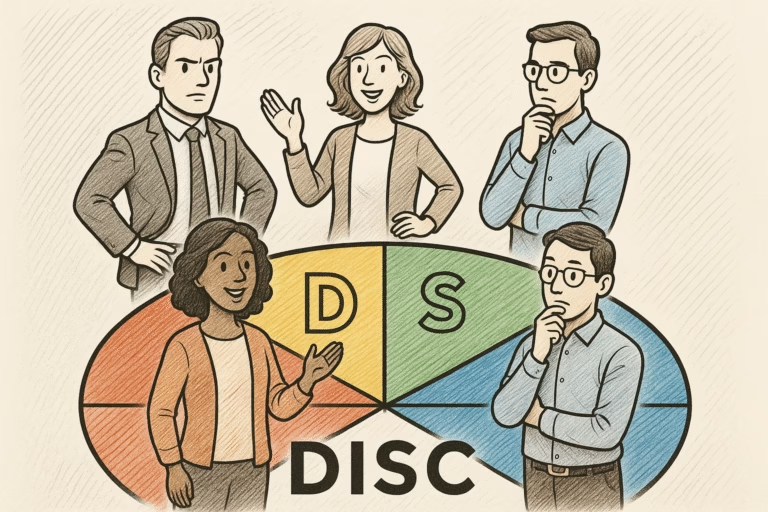At its core, the DISC model is a simple, powerful system for understanding how people behave and communicate. Originally developed by psychologist William Marston, DISC categorizes behaviour into four core styles: Dominance (D), Influence (I), Steadiness (S), and Conscientiousness (C). These are not labels or fixed traits, but flexible tendencies that shape how we relate to tasks, people, and challenges.
Understanding your own DISC style—and recognizing others’—can lead to better communication, fewer misunderstandings, and stronger collaboration. Whether you’re a leader, team member, educator, or parent, DISC is an accessible and actionable tool for growth.
Breaking Down the Four DISC Styles
Each DISC style reflects a pattern of behavioural preferences:
- Dominance (D):
Driven, results-oriented, competitive, and decisive.
Ds are natural leaders who prioritize action and outcomes. They value efficiency and can become frustrated with indecision or lack of progress. - Influence (I):
Enthusiastic, social, optimistic, and persuasive.
Is thrive on connection and enjoy motivating others. They bring energy to a group but may struggle with details or follow-through. - Steadiness (S):
Supportive, reliable, calm, and patient.
Ss are team players who prefer stability and collaboration. They dislike conflict and can be resistant to sudden change. - Conscientiousness (C):
Detail-focused, analytical, systematic, and cautious.
Cs value accuracy, rules, and logic. They may appear reserved but are often deep thinkers who strive for high standards.
How DISC Can Help You in Everyday Life
Whether you’re working on emotional regulation, communication, or executive function, understanding behavioural tendencies through DISC can make personal development more targeted and efficient.
1. Improving Communication
DISC helps people tailor their communication style to better connect with others. For example:
- A D-style person may benefit from softening their tone when working with an S-style colleague.
- An I-style communicator might need to be more focused and concise when engaging with a C-style listener.
2. Reducing Conflict
By recognizing that different people approach problems from different angles—not because they’re difficult, but because they’re wired differently—you can depersonalize conflict and collaborate more effectively.
3. Enhancing Coaching and Self-Growth
DISC is often used in coaching to uncover blind spots and behavioural patterns. It gives language to challenges like impulsivity (often seen in D or I styles) or perfectionism (common in C styles), allowing for targeted strategies to manage these traits.
Making DISC Actionable: Tools and Tips
To get the most out of DISC profiling, consider the following strategies:
- Take a validated DISC assessment. This gives a personalized overview of your behavioural style and tendencies.
- Map your DISC style to current goals. Are your tendencies helping or hindering your progress? For example, a high-I individual may need structure to stay on task.
- Use visual cues. Create a DISC profile map for your team or family to help everyone remember each other’s style.
- Pair DISC with executive function strategies. For instance, a C-style individual may benefit from setting realistic deadlines to avoid analysis paralysis.
Conclusion: A Tool for Self-Awareness and Connection
DISC personality profiling isn’t about putting people in boxes—it’s about unlocking understanding. When used thoughtfully, it offers a roadmap for improving not only how we work, but how we connect, lead, and grow. By becoming aware of our own preferences and learning to recognize others’, we cultivate empathy, adaptability, and real behavioural change.

